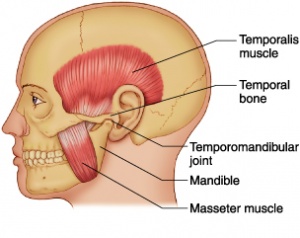The Temporomandibular Joint (TMJ) Pain

ERGONOMICS (Smart Work): Risk Factors & it’s treatment
What is the TMJ?
The temporomandibular joint or TMJ, is the joint which joins your jaw bone to the rest of your skull. You can feel it just in front of your ear hole. It can be painful for many reasons including poor posture, bad habits, growth disorder or injury and inflammation. This leaflet is designed to inform you and help manage the pain from your jaw.
The TMJ is made up of the lower jaw bone (mandible) and the socket on the skull (temporal bone). There is a disc in between these two parts to allow the joint to open and close smoothly. This is held in place with muscles and ligaments.
What are the signs and symptoms of dysfunction?
- Pain in the jaw joint or facial muscles
- Clicking / grinding / locking in the jaw
- Headaches and dizziness
- Difficulty opening and closing the mouth
- Pain when chewing on hard food or yawning
What causes TMJ pain?
There is normally a combination of causes which can lead to pain or symptoms:
- Overactivity of the jaw muscles – sometimes from continuous grinding of the teeth
- Trauma – a blow to either the joint or the jaw bone
- Arthritis
- Stiffness or dysfunction in the neck
- Sensitivity to stress-related pain
What are the aims of physiotherapy?
- To reduce pain
- To minimise stiffness
- To restore function
- To teach management strategies
Advice:
- Massage the muscles around the joint
- Use heat or ice for 10 minutes to reduce pain
- Discuss pain relief with your doctor
- Exercise your jaw regularly with guidance from your physiotherapist
- Consult your dentist to check if you are grinding your teeth at night
- Cut up food into smaller pieces
Avoid:
- Hard, crunchy and chewy foods such as apples or whole fruits, carrots or corn on the cob
- Chewing gum, pencils or your nails
- Opening your mouth widely – stifle yawns or use your fist to support your chin as you yawn
- Resting your mobile/telephone handset between your shoulder and ear
Posture and neck movement
Sometimes the pain can be made worse by sitting or lying badly, holding your jaw in a bad position or by straining/craning your neck. A stiff neck can also cause pain to be felt in the TMJ.
Having an awareness of correcting this posture and keeping your neck mobile and strong can help with your symptoms.
Consult your physiotherapist for further information.
Exercises
These exercises may be supported by further specific management techniques advised by your physiotherapist.
Chin tucks
- Standing or sitting with upright posture
- Create a double chin by drawing your chin backwards
- Try and keep your head straight as you do this
- Hold max 5 seconds, repeating 8 – 10 times
Relaxed jaw
- Place the tongue lightly on the top of the mouth
- Allow the teeth to come apart and relax the jaw muscles
Goldfish exercise
- Place the tongue lightly on the top of the mouth
- Place one index finger on the TMJ
- Place the other on your chin
- Allow the jaw to drop down and raise back up with the help of your index finger: a) partially open, b) fully open
- Monitor this exercise in the mirror to make sure the movement is straight
- Repeat 6 – 8 times, 4 – 6 times daily
Unsupported goldfish
- Place the tongue lightly on the top of the mouth
- Place an index finger on each TMJ
- Allow your mouth to open and bring back closed: a) partially open, b) fully open
- Monitor this exercise in the mirror to make sure the movement is straight
- Repeat 6 – 8 times, 4 – 6 times daily
Stabilisation exercises
- Maintain the jaw in a neutral position: a) partially open, b) knuckle width apart
- Apply gentle pressure with your thumb
For more details contact
us on 📞9618906780
